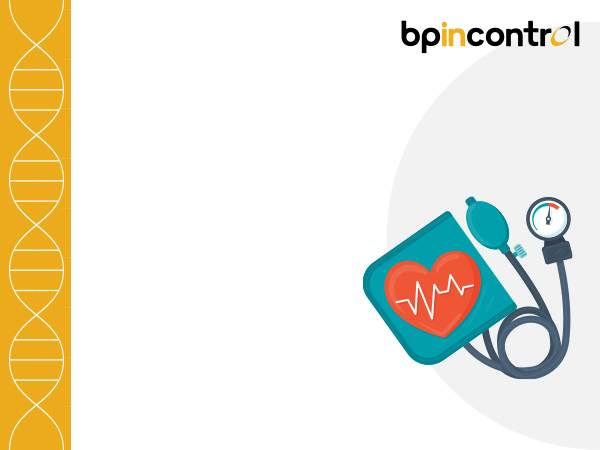Ocular Hypertension: Causes, Symptoms, Treatment

Table of Contents
Ocular hypertension is a matter of critical concern in the realm of ophthalmology. While it may not always manifest noticeable symptoms, its potential to lead to more serious eye ailments, such as glaucoma, underscores the importance of understanding this condition comprehensively.
In this article, we will give you insights on the term ocular hypertension, examining its causes, symptoms, diagnostic procedures, and available treatment options.
Ocular Hypertension
Ocular hypertension represents a condition marked by elevated intraocular pressure (IOP). To be more precise, ocular hypertension is diagnosed when the IOP in one or both eyes exceeds 21 millimeters of mercury (mmHg). It is crucial to distinguish ocular hypertension from glaucoma, as they are related yet distinct entities within the spectrum of eye disorders.
While both conditions share the common thread of elevated IOP, it is the progression and implications that set them apart. Ocular hypertension, in isolation, is characterized solely by heightened intraocular pressure. Conversely, glaucoma encompasses a broader clinical picture, involving characteristic optic nerve damage and visual field loss.
This differentiation is pivotal in the clinical management and prognosis of individuals with ocular hypertension. Understanding the nuances of this condition is essential for healthcare professionals and patients alike, as it guides informed decision-making regarding monitoring and potential interventions.
Ocular Hypertension — Causes
Ocular hypertension, characterized by elevated intraocular pressure (IOP), primarily arises from an intricate imbalance in the production and drainage of the fluid within the eye. To comprehend this condition better, let’s delve into its underlying causes:
- Impaired Drainage Channels: Under normal circumstances, the eye has a sophisticated drainage system that allows the fluid, known as aqueous humor, to circulate and exit the eye appropriately. In cases of ocular hypertension, these drainage channels may not function as efficiently as they should. Consequently, more fluid is produced within the eye than can be adequately drained, leading to an accumulation of fluid and, subsequently, heightened intraocular pressure.
- Fluid Imbalance: One can envision ocular hypertension as akin to a water balloon. Just as adding more water to a balloon increases the pressure inside, an excess of fluid inside the eye results in elevated intraocular pressure. This analogy highlights the fundamental mechanism at play – an overabundance of fluid.
- Risk in Thick Corneas: It is worth noting that individuals with thick but otherwise normal corneas may exhibit eye pressure readings that appear elevated. This is primarily due to the thickness of the cornea itself, which can cause pressure readings to register falsely high during measurements. These individuals can have pressures that are within the high end of normal or slightly elevated, but the thick corneas can skew the readings.
Ocular Hypertension — Symptoms
Ocular hypertension is often asymptomatic, making routine eye examinations paramount for early detection. Nevertheless, in certain instances, individuals may experience the following symptoms:
- Visual Disturbances: Blurred vision or haziness can manifest due to elevated IOP.
- Halos Around Lights: The presence of halos, particularly around light sources, can signify elevated eye pressure.
- Headaches: Unexplained headaches, especially in the region around the eyes, may occur in conjunction with ocular hypertension.
- Ocular Irritation: Redness, itching, or a gritty sensation in the eyes can be associated with elevated IOP.
- Nausea: Severe ocular hypertension can lead to nausea and even vomiting, although this is relatively rare.
NOTE: It is crucial to recognize that these symptoms can be indicative of various ocular conditions, necessitating regular eye examinations to ascertain an accurate diagnosis.
What are the risk factors for ocular hypertension?
Understanding the risk factors associated with ocular hypertension is instrumental in risk stratification and proactive management:
- Age: The risk of ocular hypertension escalates with age, particularly beyond the age of 40.
- Family History: A familial predisposition to ocular hypertension or glaucoma elevates one’s risk profile.
- Ethnicity: Certain ethnic groups, including individuals of African, Hispanic, or Asian descent, face a higher susceptibility.
- Systemic Diseases: Conditions such as diabetes and hypertension can intensify the risk of elevated IOP and ocular hypertension.
- Ocular Anatomy: Eye-specific structural features can contribute to increased IOP.
How is it diagnosed?
Accurate diagnosis is paramount in the assessment of ocular hypertension. Here is a detailed breakdown of the diagnostic steps commonly employed:
- Tonometry: Tonometry is the measurement of IOP, and it serves as a fundamental diagnostic tool for ocular hypertension. A tonometer is used to gauge the pressure within the eye, with readings recorded in millimeters of mercury (mmHg). Values exceeding 21 mmHg are suggestive of ocular hypertension. The tonometry procedure can be performed using various methods, including the Goldmann applanation tonometer, non-contact tonometry (air puff tonometry), or handheld tonometers. These measurements offer a crucial baseline for assessing intraocular pressure.
- Visual Field Testing: The evaluation of peripheral vision is another critical component of diagnosing ocular hypertension. Visual field testing assesses an individual’s ability to perceive objects in their peripheral vision. Early signs of visual field loss may indicate the presence of glaucoma, a condition often associated with elevated IOP. This test helps detect any potential damage to the optic nerve and visual field abnormalities. Common visual field testing methods include automated perimetry and manual kinetic perimetry.
- Optic Nerve Examination: A comprehensive assessment of the optic nerve is essential to detect any abnormalities associated with ocular hypertension. Ophthalmologists employ various techniques, such as ophthalmoscopy and fundus photography, to examine the optic nerve’s appearance, color, and structure. Any signs of optic nerve damage or anomalies can provide critical diagnostic information.
- Pachymetry: Measuring corneal thickness, known as pachymetry, is an integral part of the diagnostic process. Corneal thickness can affect IOP readings, with thicker corneas potentially leading to falsely elevated pressure measurements. Pachymetry ensures accurate IOP assessment by accounting for variations in corneal thickness.
- Gonioscopy: Gonioscopy is a specialized examination that assesses the angle between the iris and the cornea, known as the anterior chamber angle. This examination is crucial for determining the openness of the angle, which plays a pivotal role in regulating the drainage of aqueous humor from the eye. An open angle is necessary for efficient drainage and normal IOP levels. Gonioscopy can help identify angle abnormalities, which can be indicative of underlying conditions contributing to elevated IOP.
NOTE: Regular eye examinations are pivotal, given the often asymptomatic nature of ocular hypertension.
Ocular Hypertension — Treatments
Effectively managing ocular hypertension is paramount to mitigate the risk of progression to glaucoma. Treatment options encompass:
- Prescription Eye Drops: These drugs aim to lower IOP by either reducing the production of aqueous humor or enhancing its drainage. Common medications include prostaglandin analogs, beta-blockers, and alpha agonists.
- Oral Medications: In select cases, oral medications may be prescribed when eye drops are insufficient in controlling IOP.
- Laser Therapy: Laser procedures like selective laser trabeculoplasty (SLT) and argon laser trabeculoplasty (ALT) can enhance aqueous humor outflow and reduce IOP.
- Surgical Interventions: For advanced cases or when other treatments are ineffective, surgical procedures such as trabeculectomy or drainage implants may be recommended to create alternative drainage pathways.
In a Nutshell
To conclude, ocular hypertension is a condition that necessitates thorough understanding and proactive management. It’s not just a matter of concern for those with specific risk factors, but a consideration for everyone interested in maintaining optimal eye health.
Regular eye examinations are the cornerstone of early detection and intervention. These examinations allow for the timely identification of elevated intraocular pressure and provide a window of opportunity for effective management.
BPinControl’s website serves as a valuable resource for comprehensive eye care. Our Find a Physician portal facilitates access to leading eye specialists in your local area. To delve deeper into informative topics and stay informed about eye health, explore our blogs.
Remember, prioritizing eye health is a crucial decision that can significantly impact your overall well-being. Whether you have specific risk factors or not, keeping your eyes in optimal condition through regular check-ups and a proactive approach to ocular health is a choice that will benefit you in the long run!
Disclaimer
The information contained in this article is to educate, spread awareness in relation to hypertension and other diseases to the public at large. The contents of this article are created and developed by BPinControl.in through its authors, which has necessary, authorisations, license, approvals, permits etc to allow usage of this articles on The Website. The views and opinions expressed in this article are views, opinions of the respective authors and are independently endorsed by doctors. Although great care has been taken in compiling and checking the information in this article, The Website shall not be responsible, or in any way liable for any errors, omissions or inaccuracies in this article whether arising from negligence or otherwise, or for any consequences arising therefrom. The content of this article is not a substitute for any medical advice. The Website shall not be held responsible or liable for any consequence arising out of reliance on the information provided in the article.


Comments (0)
No comments found.Add your comment